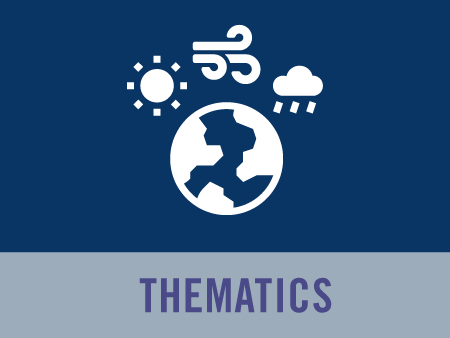2012 Arctic sea ice melting reached a new record
Following the downward trend of recent years, the area covered by sea ice in Arctic has reached its lowest value since satellite observations began at end of the 1970’s.
The minimum extent
Satellites provide the only set of measurements with global coverage. CERSAT distributes daily sea ice extent and concentration data (local percentage of the ocean surface covered by sea ice) at 12.5 km resolution from the US SSM/I sensor data since 1992. The time series from 1992 to present shows that during the recent summers, sea ice area is lower than during the 1990’s.
In 2007, the previous record was set, with a minimum sea ice extent of 4.2 millions km². This record low extent was reached in August 2012, one month before the yearly minimum period, and on September 16, a new historical record was set with an area of about 3.5 millions km², 700 000 km² below the 2007 record. Relative to the 1992-2006 climatology extent, the sea ice lost area could cover almost six times the size of France.
Figure 1 shows the daily sea ice extent from the yearly maximum extent in March for the 1992-2006 climatology, for the year 1992 shown as a reference from 20 years ago, and for the four years with lowest extents (2007, 2008, 2011 and 2012), all occurred in the most recent six years. In March 2012, the sea ice extent was about 15 millions km² which is similar to the 1992-2006 climatology value, and is larger than the 2007 and 2011 yearly maximum extents, so the low minimum extent reached this year in September has been caused by a large increase in sea ice melt between April and September.
Arctic sea ice is composed of new ice, which has formed during the previous winter, and of multiyear ice, which is thicker, having survived at least one summer melt. The main reason for the sea ice extent loss is that the relative part of the multiyear sea ice has reduced and the sea ice is more prone to melting, as it is thinner. Summer atmospheric conditions such as air temperature and wind pattern can also affect melt rates (a storm occured in August of this year).
Figure 2 shows the minimum sea ice extent of this year (in red), 2007 (in blue) and the climatology (in white) highlighting the spatial differences between the sea ice covered areas. This year, the North-East passage is completely free of ice and the Beaufort sea is almost ice-free.
Sea Ice monitoring
In addition to the sea ice concentration and extent data, the CERSAT/IFREMER processes, archives and distributes other sea ice data such as sea ice bakscatter and sea ice drift data.
Satellite scatterometer can detect the early stages of new ice formation and are useful to follow the evolution of new ice (first year ice) from day-to-day. CERSAT/IFREMER provides daily European ASCAT/MetOp backscatter maps. Figure 3 presents the standard deviation of the backscatter on September 17th, showing the new ice forming, one day after the minimum extent, whereas it can not be detected with the radiometer data before September 18th. Figure 4 below presents the daily backscatter map for September 19th showing new ice having formed (very low backscatter values). During the cold season, these data will be used to give a more detailed picture of the sea ice type evolution.
Sea ice monitoring is also supported by the sea ice displacement estimation, using the combination of scatterometer (ASCAT) and radiometer (SSM/I) data. This parameter is available since the beginning of September. Below is an example of sea ice displacement for a 3 day period from September 8th to 11th. More details about these data and our unique 20-year time series are available in Girard-Ardhuin and Ezraty (IEEE TGRS 2012).











